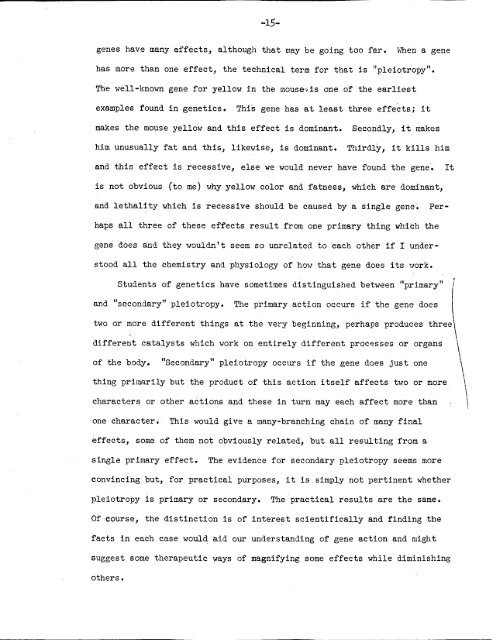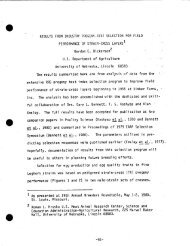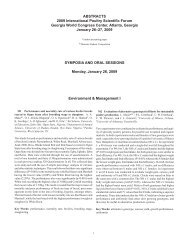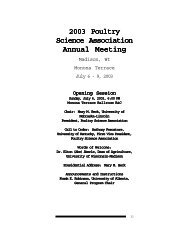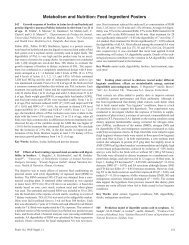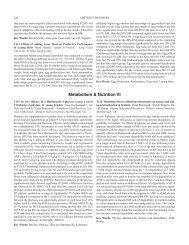Explanation Of Gene Action As Related To Physiological
Explanation Of Gene Action As Related To Physiological
Explanation Of Gene Action As Related To Physiological
Create successful ePaper yourself
Turn your PDF publications into a flip-book with our unique Google optimized e-Paper software.
-15-<br />
genes have manyeffects, although that may be going too far. _en a gene<br />
has more than one effect, the technical term for that is "pleiotropy".<br />
The well-known gene for yellow in the mouse._is one of the earliest<br />
examples found in genetics. This gene has at least three effects; it<br />
makes the mouse yellow and this effect is dominant. Secondly, it makes<br />
him unusually fat and this, likewise, is dominant . Thirdly, it kills him<br />
and this effect is recessive, else we would never have found the gene. It<br />
is not obvious (to me) why yellow color and fatness, which are dominant,<br />
and lethality which is recessive should be caused by a single gene. Perhaps<br />
all three of these effects result from one primary thing which the<br />
gene does and they wouldn't seem so unrelated, to each other if I understood<br />
all the chemistry and physiology of how that gene does its work.<br />
Students of genetics have sometimes distinguished between "primary"<br />
and "secondary" pleiotropy. The primary action occurs if the gene does |<br />
\<br />
!<br />
two or more different things at the very beginning , perhaps produces three\<br />
different catalysts which work on entirely different processes or organs \ \<br />
of the body. "Secondary" pleiotropy occurs if the gene does Just one 1<br />
thing primarily but the product of this action itself affects two or more 1<br />
characters or other actions and these in turn may each affect more than !<br />
one character. This would give a many-branching chain of many final<br />
effects, some of them not obviously related, but all resulting from a<br />
single primary effect. The evidence for secondary plelotropy seems more<br />
convincing but, for practical purposes, it is simply not pertinent whether<br />
plelotropy is primary or secondary. The practical results are the same.<br />
<strong>Of</strong>course, the distinction is of interest scientifically and finding the<br />
facts in each case would aid our understanding of gene action and might<br />
suggest some therapeutic ways of magnifying some effects while diminishing<br />
others.


